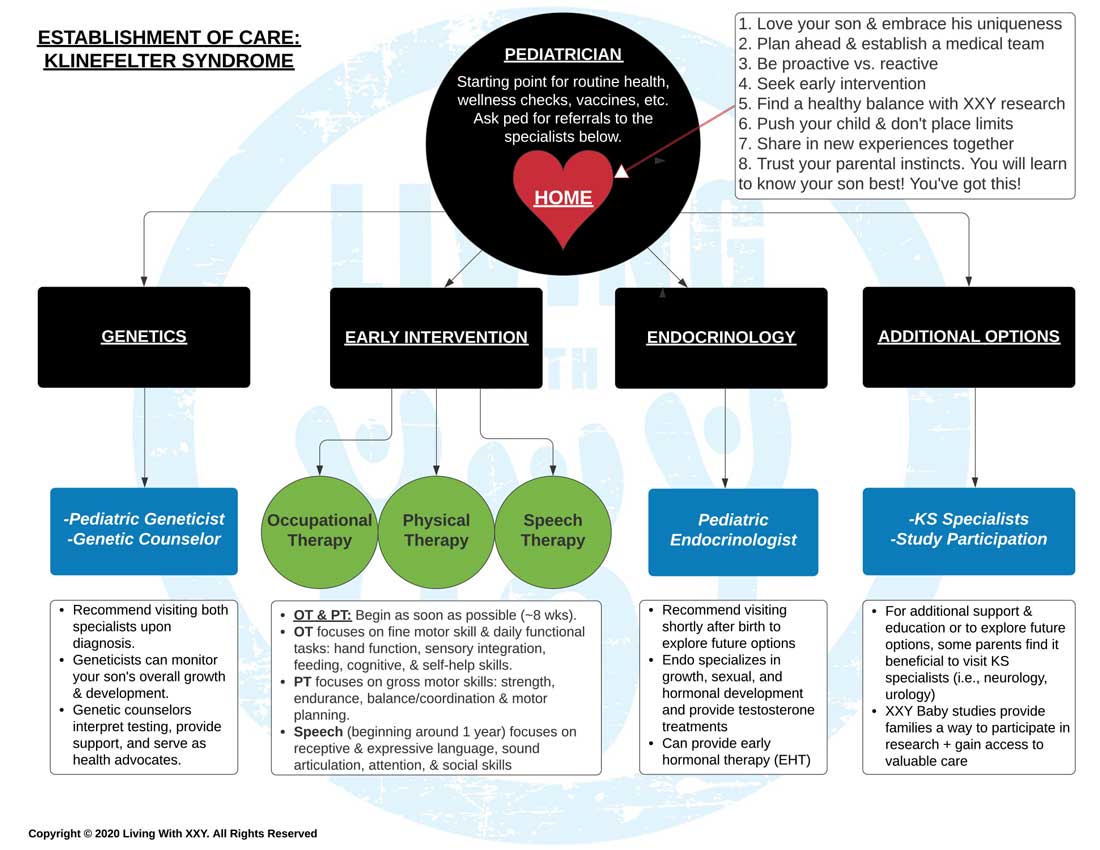Jack was the name we picked out for our son before we even knew he was a boy. There was no significance to it other than simply loving the name. His name was given to him shortly after receiving my Non-Invasive Prenatal Testing (NIPT) results, which led to more than just an early gender reveal. It also delivered the possibility of Jack being born with a genetic condition that would later change not only our lives, but many others. We waited until Jack was born to confirm his diagnosis. During my pregnancy, we did our own research, spoke with specialists, connected with Living With XXY, and prepared for the approximate 33% chance of Jack being born with Klinefelter Syndrome.
Knee-deep in the trenches of early parenthood, we received the call from our OBGYN with Jack’s test results. Jack had indeed tested positive for 47 XXY. Although we were wishing for a different outcome, we were ready and equipped to give Jack the best launch to his life. Unfortunately, there is no clear step-by-step manual to parenting a child with 47 XXY. First-time parenting alone has a treacherously steep learning curve. Throwing in all the uncertainties that come with a child with a genetic condition which is often undiagnosed, misdiagnosed, misunderstood, or foreign to most medical professions adds an elevated level of complexity. It’s easy as parents to quickly become overwhelmed, filled with fear, doubt, and hopelessness. Though it may feel like an isolated journey, the rise of prenatal testing for XXY is cultivating a community of families experiencing this together.
Though we’ve only been on this journey for two years, my husband and I are equipped and eager to help other families walk alongside with us. Though tiresome and frustrating at times, we took an aggressive approach with Jack’s early development. We are his strongest advocates now and feel privileged to have the gift of knowledge (discovering his diagnosis early on). We feel a responsibility to use this gift well by showing him one of the greatest acts of love: fighting for Jack’s best life with the resources we had. For us, that meant doing endless research, contacting doctors, visiting specialists, seeking early intervention, participating in research, connecting with others in the community, and learning how to provide a home where he can thrive. We certainly don’t claim to be experts. We are figuring this out day-by-day, trial and error, and determining what works best for our family. In the process, we are learning so much about Jack and seeing many of our efforts paying off.
I’ve created this “Establishment of Care: Klinefelter syndrome” guide to help other families who just received a prenatal or early diagnosis with their son and are wondering “what’s next?” Again, I’m not a medical professional, KS expert, or therapist—I’m just a mom in the processing of learning, experimenting, and advocating for my son. It is my hope that our efforts will eventually empower Jack to become his own advocate as he grows to be the exceptional man he was uniquely created to be. I also hope that this guide will provide some clarity, direction, and hope to other families that wish the same for their son—a brighter future and abundant life.
The establishment of care: Klinefelter syndrome guide begins in the home. You will be the best teacher, role model, and advocate for your son. Trust your parental instincts and accept the early diagnosis as a gift, as you have the key to unlocking many of the ways your son will grow, develop, think, and communicate. Then partner with experts to strengthen the start to your son’s life. I would begin with a trusted pediatrician, who will grow with your son into adulthood and oversee his basic health needs, just like any other kid. Pediatricians are not experts in Klinefelter syndrome but have the leverage and intel to refer you to the ones who are. In the diagram, you will see professionals that have helped our family during the first two years of Jack’s life. I would strongly encourage you to seek out some of these professionals for evaluation, treatment, or services. Others are entirely optional or will better serve long-term goals. This is just a snapshot of what worked for us and hopefully it can answer many of your questions. As Jack develops and we learn more, our care plan will continue to change to meets Jack’s growing needs.
We hope this Establishment of Care: Klinefelter syndrome guide will encourage families to customize their own approach to establishing their son’s action plan. Yes, this can all be a lot to take in. However, your incredible son will benefit as you watch him break barriers, push through challenges, and grow into an exceptional individual. As we learn together, we hope this empowers families to empower their sons. We are in this together!
*The diagram below is based on my own experience and the content is not intended to be a substitute for professional medical advice, diagnosis, or treatment. Always seek the advice of your physician or other qualified health provider with any questions regarding Klinefelter Syndrome.




Leave A Comment